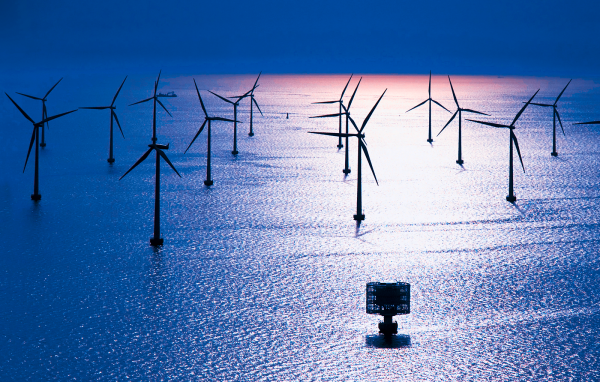
An offshore wind energy generation project, in which floating buoys are attached to wind turbines, has more installation capacity and it provides 40 percent more powerful, frequent and sustainable wind energy than the project that are on land. But the floating buoys used for such deep water installations are enormous so may prove very expensive.
Americaâs unwillingness did not let it become a leader in technological development and yet there is no windmill turned in the strong, abundant winds that flourish off the shore. Non- collaborative bureaus, patchy piecemeal policies and too much expense are some challenges that are playing a vital role in preventing the offshore wind projects, becoming a reality.
Now France is taking step to surmount these challenges and turning the design of turbine on its head. The project developers deem that it will be a low-priced option.
The good
1. As the Federal energy regulatory commission, state and local commissions will pass the review of permission, the project would be free from legal formalities. The commencement of the project would be less expensive due to reduced overhead charges. The construction phase will take less time and budget.
2. Since the project location will be around twenty miles off the shore, it will not disturb the oceanfront views.
Can this be better?
1. The well-structured, centralized layout from initiation to termination can aid to run a well-organized, managed and systematic project.
2. The proper focus on stakeholders from the commencement of energy project can help in monitory aspects. Simultaneously, if the government provides financial support then it can lead to a better offshore wind project.
3. Formation of regulations regarding vigorous offshore project lattice would give ease to the project developers. So Federal Energy Regulatory Commission or FERC should issue new rules regarding incentive rates as soon as possible. This will encourage offshore development as this will allow the developers to charge more for utilizing their transmission line.
The bad
1. The offshore projects are not as commercially feasible and economically viable as the projects on land are. The set ups and construction phase is very expensive because the buoys needed to keep the floats above the water, are massive so they are very costly.
2. The commencement of this new industry will require patience and acceptance from the interlopers as such activities would impinge upon the landowners, boaters, crowd of ocean space, stakeholders, fishing companies and shipping corporations.
Can this be avoided?
1. Federal government can help by long term financial tools and investment in the industry. FERC can shape the transmission regulations for controversial transmission project.
Simultaneously, the project needs to get extended eligibility for production tax credit. It will facilitate more stability, accountability and efficiency to the offshore wing projects.
2. The active participation and suggestions of offshore stakeholders can work wonder because ocean and the horizon of beach are the public trust resource. It is imperative to represent their interest also.
3. Instead of elimination, we can minimize or reallocate the sea creatures. This will lead to an eco-friendly project.
The ugly
1. It would take time and rather can lead to a longer, if any legal or political entity delays the official process.
2. Too much noise disturbs and threatens the fishes, birds, marine amphibians and mammals which lead to their reorientation.
Environmental Considerations
The procedure, tools and equipments used in the set up and construction process have certain impacts on the natural environment which are as follows:
1. Species and Marine life: In the process of generating energy, some artificial rocks are also used. Reefs may be the cause of collision of birds and migrated birds may get disoriented.
2. Anxiety and threat among creatures: The cables used underwater to generate electro-magnetic field and the shrilled sounds can create trouble and fear. This can be another reason of disorientation.
3. Latent variations in natural atmosphere: Electromagnetic field, anchoring and noise generated through system, imbalance the lives of the species. Simultaneously, the natural environment gets unsettled.
4. Clean energy source: The energy produced through offshore projects is respectively clean which reduces the use of fossil fuel and pollution.
5. Illustration and sound collisions: The turbine, anchoring devices, spinning blades and other tools of energy project produce noise and visual impacts that leads to air and sound pollution.
Why are we so critical?
The energy generated from offshore projects, is relatively clean and generates fewer pollutants. On the other hand, the traditional sources incline air pollution. The fossil fuel that is used in the energy generation process, increases green house gases and their effects which lead to global warming and such other vital issues.
Thus the impacts of offshore energy sources are trivial in front of the impacts of traditional sources. Though in the case of wind energy generation process, some ecological effects and issues regarding disorientation of birds, fishes and mammals are also considerable.
The Bottom line
The energy produced through such offshore energy projects is clean and can be an excellent substitute to fossil fuels which will lead to a better environment and probably will reduce global warming as well. But simultaneously, we need to take certain actions to settle down the lives of stakeholders, fishes, birds, mammals, amphibians and other species affected by such projects. In the entire matter, the patience, acceptance and cooperation are must by the government, FERC and stakeholders to make this a success.


